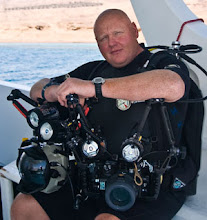

Jade, who is estimated to be anywhere between 40 and 80 years old, was found floating in shallow water at Palm Jebel Ali in February. She was suffering from severe dehydration as well as a nasty case of constipation and bad breath caused by infections.
But yesterday she looked the picture of health as she waited on the beach ahead of her release.
Her sheer size meant it took a hoist and a lot of muscle to load her onto the boat, which would then take her 20km off-shore where she was freed along with 15 other turtles who have been rescued and rehabilitated in Dubai.
The manager of operations at Burj Al Arab’s aquarium, Warren Baverstock, has helped Jade back to health but says it was no easy task.
“We had to gently force-feed her and it took four men to hold her down each time,” he said. “She was pretty feisty.”
Jade was treated by the Wildlife Protection Office (WPO), as well as conservation and marine life experts from Jumeirah Group as part of a programme in Dubai to protect the endangered creatures.
Her underwater adventures will now be monitored by a sophisticated tracking device fitted to her shell and charted online so the public can log in and cheer her on.
































